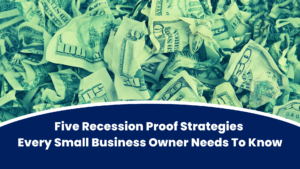Ever wonder how a bank makes a decision to give your business a loan or not? A bank VP discloses all the secrets.
Special thanks to guest blogger Vice President of Citizens Bank Patrick Rodriguez, who told us how banks make loan decisions during our recent webinar.
Last time, we discussed the first three C’s of lending, character, capacity, and capital. Today, we’ll finish up with the last two C’s, collateral and conditions, plus the importance of being able you tell your story.
Collateral
The fourth C is collateral. Collateral is essential depending on what type of loan you are looking to secure. For example, you use a long-term loan if you need equipment because it’s a long-term asset. If we’re looking to do accounts receivable or business assets, we’re looking at a shorter-term loan for working capital. We will want to know about your account receivables. How long does it take for customers to pay you? How long is your business cycle from order to profitability? What does that look like, and what is the security we use to give you the loan? That plays a significant part in how we do your loan and your loan amount.
Sometimes our clients want lines of credit for equipment purchases. Lines of credit are supposed to be revolving, and most banks require that. So, will you be able to pay that equipment loan off in 12 months? The line of credit will more likely have that requirement. And we’ll match the collateral to that. So, it’s critical to explain to your bank what you want to do with the money from the collateral perspective.
Conditions
The final C of lending is Conditions. That’s the why behind the loan. Again, the numbers tell us what the financial picture you’re telling us is that will allow us to say, “Yes, we believe if we give you this loan, you will pay us back.” Conditions are crucial to how much we loan and what we will do for you as a bank.
Why you need the loan is essential. Are you struggling, and will the loan inject capital into a struggling business model? Giving loans, in this instance, is difficult for a bank because you’re telling us your business might not be able to survive if we don’t give you this loan.
On the other hand, it could be that you’re going to use your liquidity to hire more employees, so you need a line of credit to help you through the business cycle. It could be that you’re growing and need more equipment, from desks to computers, because the capacity you hit with your business allows you to go ahead and make that move. So we consider things like that.
How is this business going to benefit from the loan? That is a significant condition of why we give a loan. We want to know mathematically and financially what you’re going to do with the loan and to see how it will grow profit margins and revenue, help you be leaner, or reduce overhead. So you need to understand how your business will benefit from the loan and articulate that to a banker if you want to get a loan.
Your Story
How do you know what’s going to work and why now? Those two questions have a huge impact when I talk to underwriters. How do we know that what the loan is for will play to your expertise as a business owner? Your story is your opportunity to help us understand what you already know as a business owner, why you’ve been successful, and why a loan will continue that success.
Also, why is now the best time to do what you want to do with this money? Is it because you anticipate growth? Is it because you’re at a point in your business cycle or your business where you can take the next step to grow revenue?
Or it could be that you want a loan to repay other capital, a high-interest loan, or buy back your equity from an investor now that you’re profitable. Those are all good stories that, as a bank, we can understand and make a case for lending.
One Final Point
It’s essential to put money back into the business but also save for those rainy days – have three to six months of expenses in the bank if you need it. You need that liquidity to run your business with a good cushion, so if something happens, you can demonstrate that you can handle it.
Bad things do happen, of course. We’re still getting through the effects of the pandemic. Being able to tell a story to a bank can offset some of what the financial information tells us. Most people had a story to tell during the pandemic in 2020. A bank will take a look at that on a case-by-case basis. We’ll say, “Hey, everybody had to go through this. What did you do given the character of your business?” How did you and your management team push through, recover, and seize a new opportunity?
Those are stories that banks love to hear, and they are the kind of stories that can get you funded to grow your business and pursue the rest of your goals.
Interested in funding? Take a look at different financing options from our partners.




